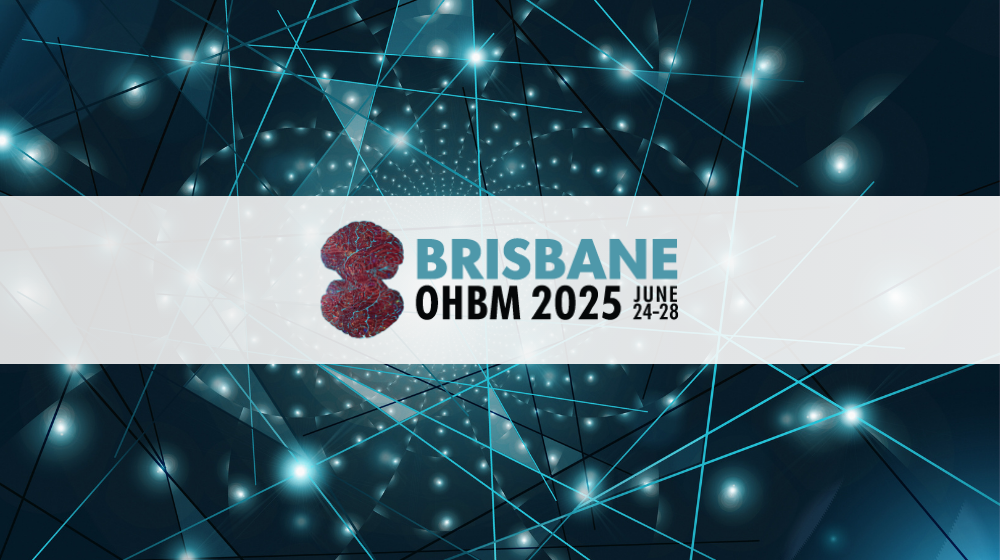The Organization for Human Brain Mapping (OHBM) 2025 conference just wrapped up in the stunning city of Brisbane, Australia, and I’m still processing all the exciting ideas, people, and collaborations it brought together. Held at the Brisbane Convention & Exhibition Centre, this year’s event was nothing short of inspiring, bringing together thousands of neuroimaging researchers from around the world to explore cutting-edge technologies, global challenges, and the future of our field.
Kicking Off with the Neuroimaging Statistics Workshop
My OHBM journey began with a satellite workshop on Neuroimaging Statistics. In a time where AI dominates conversations, this workshop served as an important reminder: robust statistical foundations still matter. These talks bridged classical statistical thinking with modern AI applications, showing how we can integrate both to advance research in uncovering the structural and functional organisation of the brain.
Talairach Lecture: Global Data, Local Impact
The conference officially began with the prestigious Talairach Lecture by Dr. Paul Thompson, who spoke about the ENIGMA consortium, a global neuroimaging collaboration combining data from across continents. Dr. Thompson’s talk highlighted how AI and global data sharing are reshaping our understanding of brain health and disease. It was a powerful message on how far we’ve come and how much more we can achieve.
Themes That Shaped OHBM 2025
1. AI Meets Open Science
One of the strongest themes this year was the intersection of AI and open science. Educational sessions emphasised tools and standards designed to make neuroimaging reproducible and transparent, including:
· FAIR (Findable, Accessible, Interoperable, Reusable) practices in neuroimaging.
· Growing awareness around the environmental impact of AI models and big data neuroimaging analyses, from carbon emissions to digital waste.
· Open-source imaging protocols that reduce vendor-specific biases.
2. Making Neuroimaging More Inclusive
Accessibility was front and centre, with powerful discussions around how to make neuroimaging research feasible in lower-resource settings. Talks showcased how low-field MRI, coupled with AI upscaling methods, can democratise access to brain imaging. There was also a critical conversation around AI model explainability, especially when applying these tools in clinical settings across diverse populations.
3. Tackling Mental Health with Data
Several talks focused on data-driven approaches to mental health, including dementia and depression. Researchers are now using techniques like normative modelling and insular cortex biomarkers to identify subgroups within disorders and personalise treatment pathways. This is precision psychiatry in action.
4. Brain Geometry, Consciousness, and Development
We also saw exciting theoretical advances, from geometric brain models (going beyond classic networks) to mapping consciousness through imaging. Another highlight was a session on fetal programming and maternal mental health, exploring how early life brain development is influenced by maternal depression.
5. Neuroimaging at the Clinical Interface
Talks on connectome mapping for surgical interventions offered real-world clinical applications, emphasizing the importance of industry-academia collaboration to turn neuroimaging insights into usable tools for hospitals.
6. Sex and Gender Differences in the Brain
A dedicated track on sex/gender neuroscience sheds light on global research findings, reminding us why considering sex and gender differences is crucial in brain research and clinical practice.
Posters, People, and Possibilities
With over 2,000 posters spanning everything from AI-powered predictions to analysing large-scale datasets like UK Biobank, ABCD, and HCP, there was no shortage of learning opportunities. Personally, it was incredibly rewarding to meet researchers who had already been building on my previous work. These interactions are what make OHBM so special: a space for collaboration, growth, and inspiration.
Final Thoughts
OHBM 2025 wasn’t just about new methods and big datasets; it was about rethinking how we do science, making it more sustainable, inclusive, and collaborative. From open-source tools to climate-conscious computing, the neuroimaging community is evolving in thoughtful, future-focused ways. Here’s to carrying that momentum forward and building a more connected, equitable, and insightful future for neuroimaging.
A heartfelt thank you to everyone listed below for your generous financial support, invaluable guidance, and encouragement throughout my participation at OHBM 2025. Your contributions made it possible for me to attend, engage meaningfully with the global neuroimaging community, and proudly showcase my work.
NIHR BRC Brain Technologies theme, Oxford University Centre for Integrative Neuroimaging (OxCIN), Supervisors, and Co-authors, Software Sustainability Institute.



